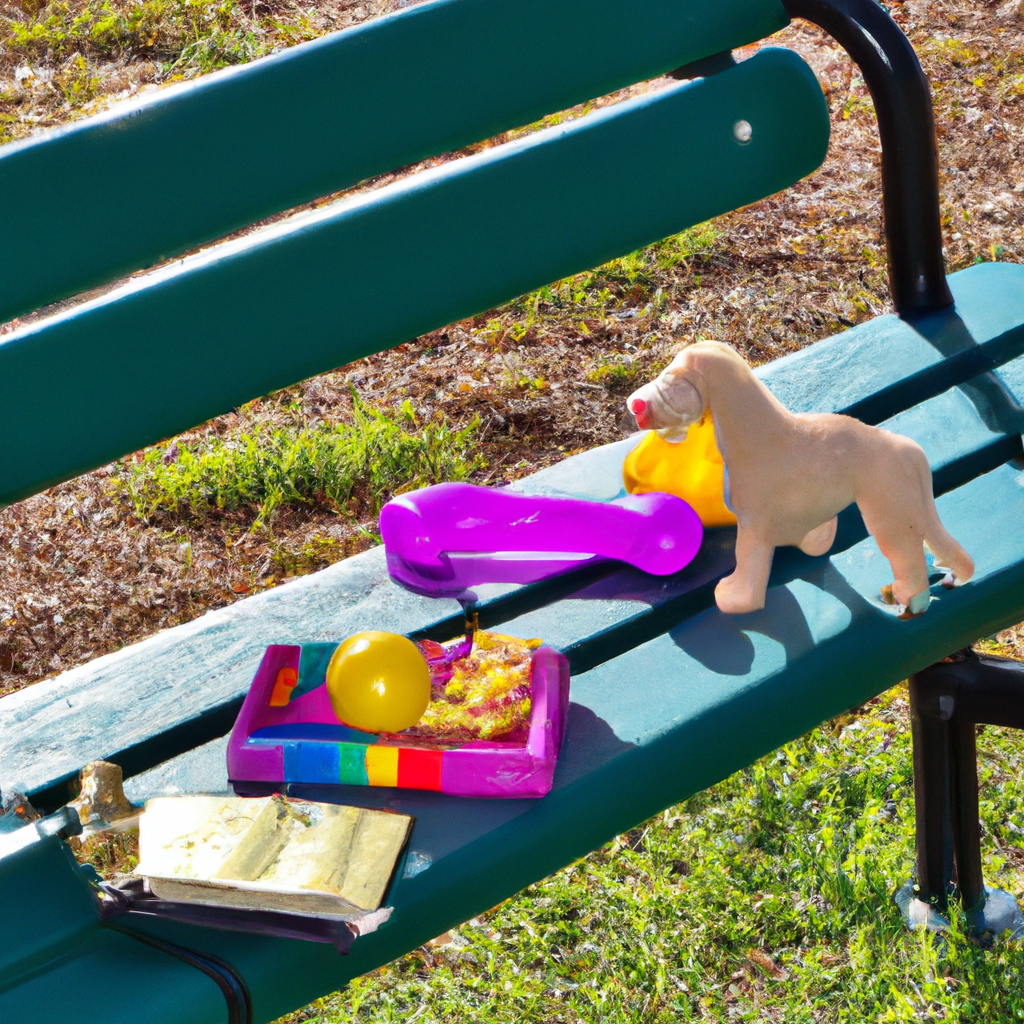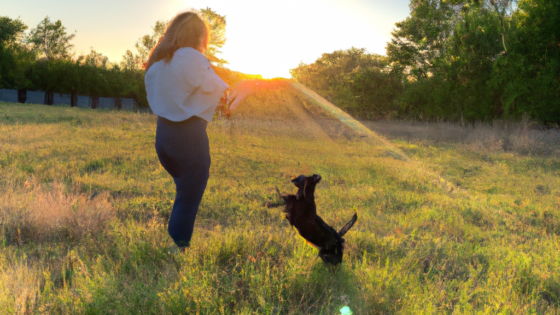Introduce the topic of why positive reinforcement and training is beneficial for both pet and pet owner.
Bringing a pet into your home is a big responsibility and can be a little overwhelming. While you may think the only way to have a well-behaved pet is to use discipline, positive reinforcement and training can be much more beneficial for both the pet and their owner.
Positive reinforcement focuses on rewarding desired behavior, rather than punishing unwanted behaviors. Through their actions, a pet can learn that certain behaviors will be rewarded, encouraging them to repeat them in the future. This will also help strengthen the bond you have with your pet and make it easier for you to teach them bad habits.
Positive reinforcement is also a more humane approach to dog training. This can help to ensure that your pet is never being mistreated due to punishment, and will lead to better obedience results that last longer.
Training your pet using positive reinforcement can also be an enjoyable experience for both the pet and their owner. After all, who doesn’t love to be rewarded for good behavior? For pet owners, this can also be an opportunity to learn more about the pet’s behaviour.
By taking the time to train your pet with positive reinforcement and rewards, you can foster a happier and healthier relationship with your best friend. With consistency and patience, you’ll be able to create a loving and respectful environment where your pet can grow and thrive.
Discuss how to encourage good behaviors, such as praise, treats, play and exercise.
When it comes to pet ownership, one of the most important steps we as pet parents can take is to foster positive behaviour in our furry friends. While it may take some time and patience, showing our pets the right way to behave will ultimately help create a loving and harmonious bond between owner and pet.
Encouraging good behaviour in our pets starts with positive reinforcement. By providing our pets with plenty of praise, treats, play and exercise, we can create a positive environment and teach them to behave well in the process.
Praise is an important tool for pet owners to use when teaching good behaviours. Reward your pet every time they listen to a command or do something you’re proud of. Make sure your praises are loud and enthusiastic – this will motivate your pet to keep up the good job and eventually become a good behaviour model.
Treats can also be used to reinforce good behaviour. Treats should be provided in moderation and allocated when a pet has done something right. Treats are rewarding, so be sure to provide only healthy ones that your pet loves!
Play is also a great way to encourage good behaviour in your pet. Providing regular playtime is essential for a number of reasons. Not only does it keep your pet entertained and happy, it also helps them to learn and practice good behaviour.
Finally, exercise is an important component of a pet’s life. Regular exercise will not only help to keep your pet healthy and fit, but it also helps to keep their minds active, leading to better behaviour and less destructive behaviour.
Ultimately, it’s up to us as pet owners to foster positive behaviour in our furry friends. With the right amount of praise, treats, play and exercise, we can create a loving and stimulating atmosphere for our pets and watch them learn and grow into well-mannered and friendly companions.
Demonstrate how these positive methods are proven to create a strong bond between pet and pet owner.
Every pet owner wants a strong bond with their pet. To create a strong bond between pet and pet owner, positive reinforcement can be a great tool to use. Positive reinforcement establishes trust and encourages behavior reinforcement because the pet is rewarded with praise or rewards in response to performing desired actions.
Positive reinforcement has many benefits. It reinforces desired behaviors, encourages enthusiasm, strengthens bonds between pet and pet owner, and helps the pet become more secure in their environment. Here are some tips to keep in mind when using positive reinforcement:
•Be consistent. Pets learn best when given consistent commands, rewards, or punishments.
•Be generous with rewards. Providing a treat or a pat on the back for each good behavior will help your pet recognize good behavior and strengthen the bond between you.
•Be consistent with punishments. You must be consistent with punishments for bad behavior. Your pet will quickly start to recognize the difference between good and bad behavior if you are consistent with your punishments.
•Be creative. Try to come up with different ways to reward your pet while still providing consistency. Variation in rewards can help maintain interest in the behaviour and keep your pet focused.
•Be patient. Training a pet is not easy, so you will need to be patient. Working with them slowly and gradually will help your pet learn faster and provide them with an opportunity to form a stronger relationship with you.
These are just a few tips to keep in mind when using positive reinforcement to encourage and maintain good behavior in your pet. With some patience and consistency, you can establish stronger bonds with your pet, create routines, and establish trust between the two of you.
Explain methods to discourage unwanted behaviors, such as providing alternative activities or avoiding physical punishment.
Nobody likes dealing with naughty behaviour from their beloved pets, and it can be difficult to manage. But all is not lost! There are lots of ways to encourage positive behaviours in pets, and here are a few ideas.
Encourage positive behaviours with treats and rewards. Rewarding your pet with a treat or extra attention when they do something correctly can quickly help them learn what behaviours are desired.
Redirect unwanted behaviors. If you see your pet behaving inappropriately, redirect their attention towards another activity. This can help to prevent the development of unwanted behaviours.
Set clear boundaries. Make sure your pet knows what is acceptable and what is not. Be consistent in applying boundaries and punishments, and be sure to provide plenty of positive reinforcement.
Reinforce positive behaviours with toys and activities. Set up exciting and stimulating activities for your pet to engage in, such as interactive play, puzzle toys, and interaction with other friendly pets. This means they are less likely to develop and display bad behaviours.
Avoid physical punishment. Physical punishment often fails to reduce unwanted behaviour, and it could actually lead to more aggression and a feeling of mistrust. It’s much better to use a combination of positive reinforcement and redirection.
By following these methods, you’ll soon have a well-behaved pet that understands and respects boundaries and follows instructions. Keeping these tips in mind will help make your pet an important part of your family!
Explain how consistency and patience are important keys to adding structure and building a lasting relationship with your pet.
Having a pet is a rewarding and joyful experience, but it does take patience and consistency to ensure your pet develops a positive relationship with you. Consistency and patience are essential for teaching your pet how to behave, and also for building a lasting relationship.
First and foremost, it’s important that you establish a set of rules when it comes to your pet. This will ensure your pet knows what’s expected of them and how to behave. Give your pet plenty of praise and rewards when they follow the rules, and provide clear consequences for when they don’t. The most important thing is to be consistent in enforcing your rules, so your pet knows what’s required of them.
It’s also important to be patient with your pet. Training a pet is an ongoing process, and it takes time for your pet to learn and adjust to their new environment. Don’t give up on your pet if they don’t respond right away; it’s important to provide them with positive experiences and consistent guidance so they can learn.
By incorporating consistency and patience into your relationship with your pet, you can create a safe and happy environment where your pet feels comfortable and secure. As a result, you’ll be able to foster positive behaviour and build a lasting relationship with your pet.





